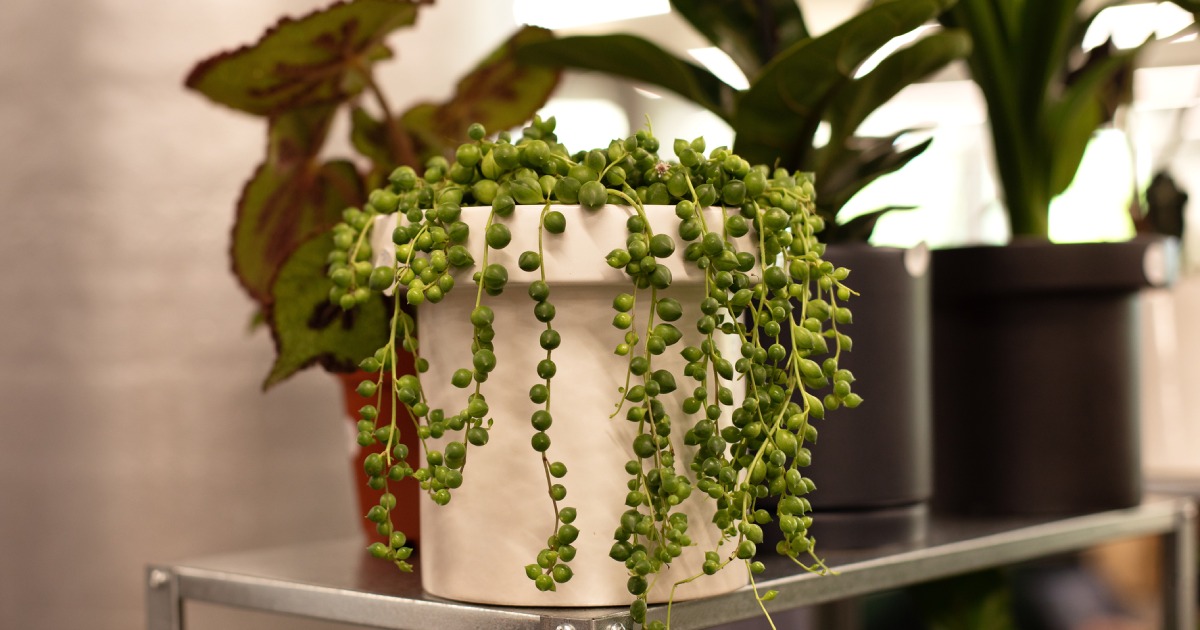The succulent known as string of pearls with its long trailing stems festooned with round green leaves that look just like peas are perfect for a hanging pot. They also produce unusual flowers in the early spring. Although they need a little more upkeep than your typical succulent, they are happy with less light than most succulents — they are a great option for north-facing rooms.
But don’t eat these peas! —otherwise known as string of beads or string of peas, for obvious reasons once you’ve seen it—is poisonous. However, in a pet and toddler-free household string of pearls makes an ideal houseplant.
This guide will help you meet this unique succulent’s needs.
Quick Guide to String of Pearls
| Sun requirements | Medium-low light needs for a succulent, dappled shade or indirect sunlight may be sufficient |
| Hardiness/Zone | Not cold hardy, plant outdoors only in Zones 9-11 |
| Water needs | Above average for a succulent, prefers not to dry out entirely |
| Toxicity | Poisonous to humans and pets |
| Primary growth season | May have a winter dormancy or (indoors) may grow slowly year-round |
| Typical size at maturity | Strands trail up to three feet |
Growing Requirements for Senecio Rowleyanus
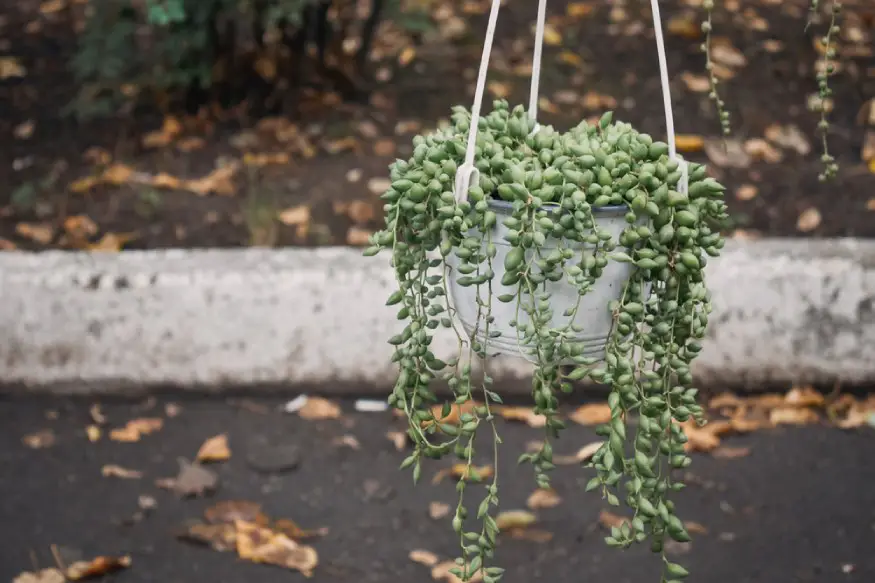
Where to Plant
Pet Access
String of pearls is not the plant for you if you live with pets or young children. In humans, the consumption of string of pearls can cause serious vomiting, diarrhea, and skin rashes. If consumed by pets, it can cause similar (and more severe) problems.
Warning: While there are some mildly toxic plants you can get away with keeping on a high shelf in a house with pets or young children, we strongly recommend that you do not take that risk with this plant.
The round leaves look so much like peas (or kibble) that string of pearls is much more attractive to your pet or child than, say, a spiky aloe plant. It looks too much like food for them to resist.
If you are looking for a pet-safe succulent with a trailing stem structure, we recommend the string of hearts. It produces trailing stems of beautiful sage-green, silver, and pink leaves and is safe for all of your two-legged and four-legged housemates.
For more information on pet-safe and pet-unsafe succulents, check out our guide.
Indoor Placement
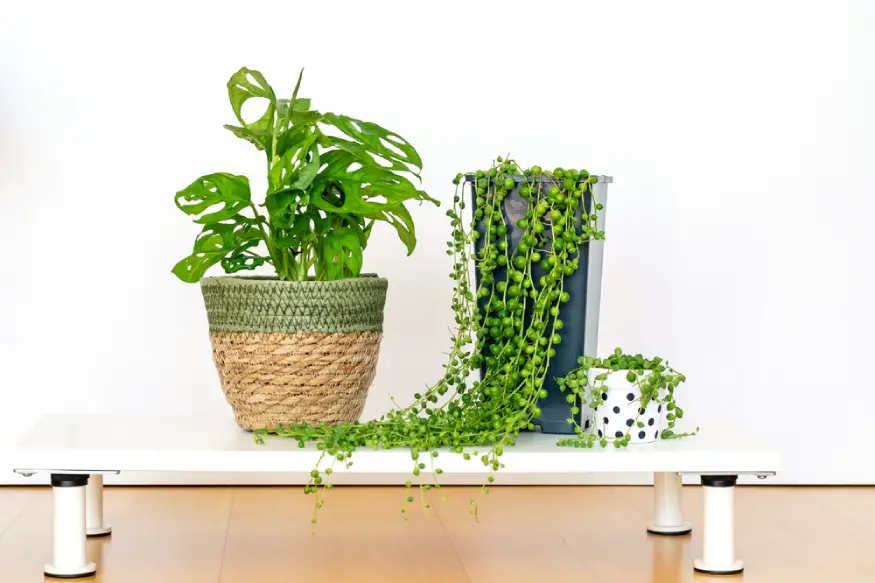
It’s always a struggle to find suitable plants for bright east- and north-facing windows, but a string of pearls plant fits the bill. It doesn’t like direct summer afternoon sunlight and will tolerate bright indirect light.
This succulent is prized for its beautiful trailing stems, which beautifully fill out a hanging planter but can also be trained to grow all to one side.
Like many succulents, the string of pearls originates in the deserts and semi-deserts of east Africa. In the wild, the string of pearls doesn’t grow in a hanging basket; it grows on the ground. The stems don’t trail vertically; they creep horizontally, making a ground cover.
Info: Their origin as a ground-cover plant is why their sun needs differ from most succulents. They are habituated to growing in the dappled shade of taller plants.
However, in many indoor locations, the top of the plant (as opposed to the trailing leaves) may not get much light, which may become sparse. If that occurs, you may want to add a grow light or move your plant outdoors to a suitable spot for the summer.
Outdoor Placement
In hot climates, a string of pearls can be grown outdoors as a ground cover, in a pot (hanging or otherwise), or even trailing over a rock wall. It is not cold-tolerant, so if you live outside of USDA Zone 9-11, you’ll need to grow it in a pot and move it indoors for the winter.
The best placement for an outdoor string of pearls would protect the plant from the afternoon sun. It prefers dappled or indirect light. For more on how to grow healthy indoor and outdoor succulents, check out our guide to succulent care.
Container and Soil
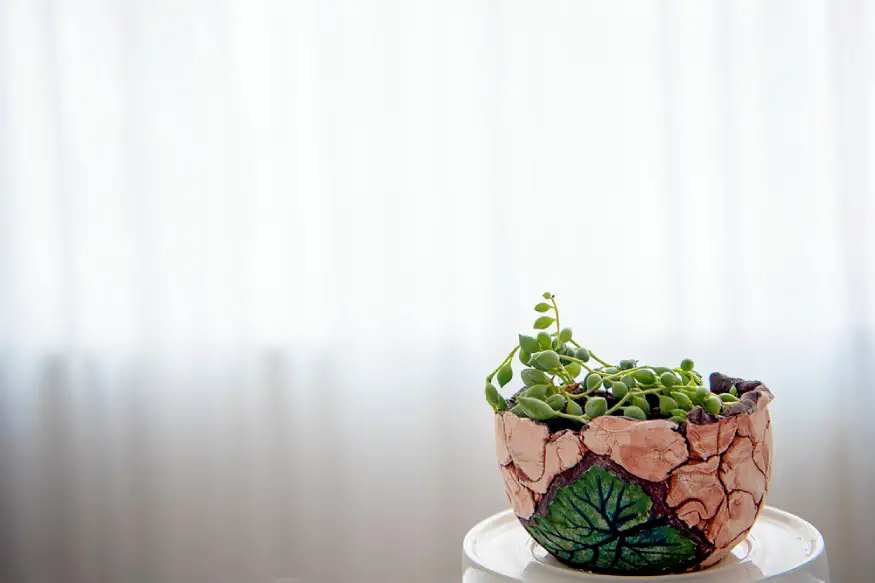
String of pearls has a bit of a Goldilocks complex. It doesn’t want to dry out entirely, the way many succulents can, or at least not for long. At the same time, it doesn’t want soggy roots. It grows best planted in a well-draining potting mix in a well-draining pot. You should also use a pot with a good-sized drainage hole. If your pot doesn’t have a drainage hole, you can drill your own hole or use the ‘pot in a pot’ method.
Note: Over time your string of pearls can develop a pretty substantial root-ball, but they are not particularly deep-rooting. That means it’s smart to use a shallower planter than you normally would use for a plant its size. Too deep of a pot can make watering more challenging.
Commercially available cactus/succulent-specific potting mixes will work, but we encourage you to make your potting mix for succulents. Not only is it better for your succulents than anything you’ll find at your local big-box store, but it’s also cheaper. You don’t have to be strict about the ratios, but a good basic recipe is:
- Two parts potting soil, ideally a cactus blend,
- One part coarse sand, and
- One part gritty amendment (such as perlite or pumice).
The sand and perlite will ensure the roots don’t become water-logged, which is a leading cause of root rot and other pests and diseases. If you don’t like the look of the perlite on the surface, you can use mulch such as a thin layer of potting soil or coarse sand or a decorative layer of pebbles, small seashells, or bark.
Watering
How to Water
Although the string of pearls prefers more frequent watering than most succulents, we still recommend using the “soak and dry” method.
When to Water
Unlike many other succulents, string of pearls tends to prefer a steady drinking habit over occasional binges. They do not want to dry out completely, or at least they don’t want to stay that way. They may want watering twice a week in the summer. If you see the leaves deflate and lose their vitality, that’s an indicator it is overdue for a drink.
Even a rather large cluster of string of pearls may have a root system that is only a few inches deep. That means that if you plant your string of pearls in a standard-proportion pot and allow the pot to dry out entirely before you water it again, your string of pearls is spending a lot of time drying.
Note: We recommend using a shallow pot so that when the string of pearls is ready for more water, the pot isn’t still half-full of wet soil.
Considerations when watering
Some string of pearls plants go dormant in the winter, while others (particularly indoor plants) tend to grow slowly year-round. You can try to force a dormancy by overwintering the plant in a location where the temperature is around fifty degrees Fahrenheit, but there is no real need to. Simply water the plant as needed, but you’ll want to cut back if the plant goes dormant.
Fertilizer and Maintenance
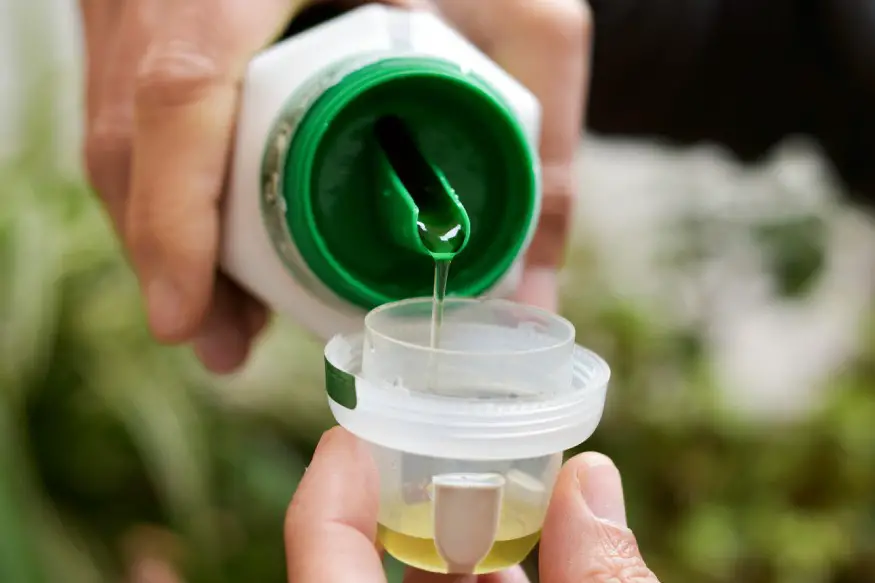
String of pearls responds well to routine gentle fertilizing. You might not bother fertilizing much if at all the first year, when its soil is freshest, but a light occasional fertilizing can’t hurt. In subsequent years, fertilize it up to monthly. You can skip the winter months, whether or not it is in a true dormancy.
Note: When you do fertilize, use a liquid cactus fertilizer, preferably organic. Dilute a typical chemical liquid fertilizer to at most half-strength (we recommend quarter-strength). If you’re using an organic fertilizer formulated specifically for cacti or succulents, follow the package instructions.
Pruning this plant is generally unnecessary, but it won’t hurt the plant and can help you give it a shape you like. If you prune it, use a sharp, sterile knife or pruning shears. You can propagate the cuttings.
String of pearls doesn’t grow particularly quickly, so it doesn’t typically need repotting more than every few years. Still, we recommend repotting all newly purchased succulents. This way you can make sure the plant and roots are healthy and free of pests, and you can replace what may be inappropriate potting soil. Make sure to replant into a pot with drainage.
This plant’s skinny stems are quite fragile, so it’s easy to break off a few pieces when repotting. That’s not necessarily a bad thing because they are so easily propagated. However, the best tips we’ve seen on reducing the damage when repotting were in this video, which recommends folding the stems back onto the center of the plant and cutting open the plastic pot rather than pulling the plant out of it.
String of Pearls Propagation
Stem propagation of string of pearls couldn’t be easier. Roots can grow out of the stem wherever a pearl attaches, so you can propagate any piece that falls off (or you cut off) of your plant. There are two main ways of using these stem cuttings.
Making New Plants
This is what people are typically doing when they propagate. You can plant your string of pearls stem cutting in a new pot to create a new plant or plants.
Take your cutting and lay it in a pot of damp, succulent-appropriate potting mix. Curing is not necessary and likely not advisable with such a weak-stemmed plant. The pearls should be pointing up so that the stem (where the roots will emerge) is in contact with the soil.
You can leave the stem entirely in contact with the soil or leave one end draping over the edge of the pot. You can propagate multiple pieces in a single pot to give your plant a head-start on the trailing appearance you want.
Bulking Your Plant
If you grow your string of pearls in a location where the plant’s crown gets little sunlight, it may not look as bushy around the top as you’d like. If you’re willing to sacrifice a little length, you can address this problem by propagating new strands back into the same pot as the old strands. This can help fill it out and give it a healthier look.
Common String of Pearls Problems
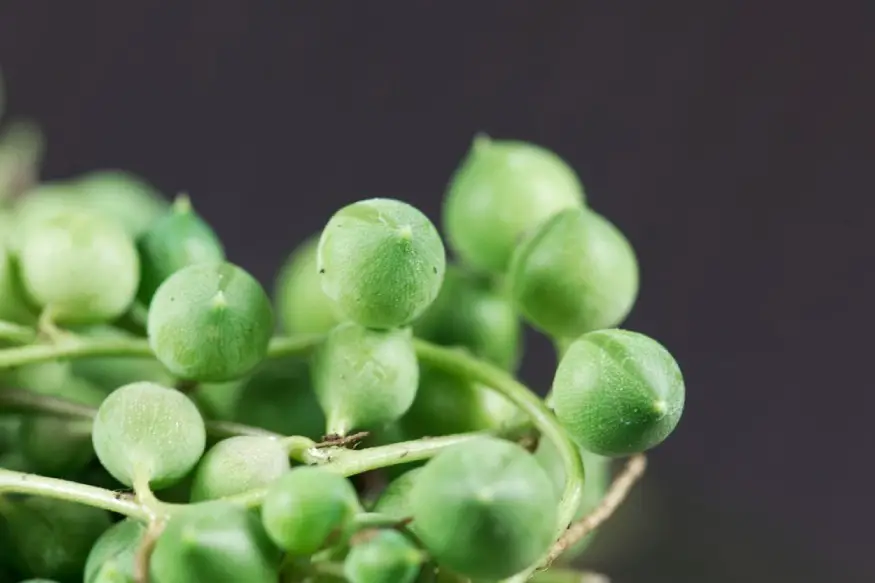
Like most succulents, string of pearls is generally pretty resilient and low maintenance. However, certain problems can result from inconsistent maintenance, inadequate conditions, or just bad luck.
- Shriveled leaves: Underderwatering is usually the problem here. String of pearls does not like to dry out as much as many other succulents. Water thoroughly, using a recommended method, and increase the frequency.
- Scarring on leaves: If your leaves are shriveled and have visible surface damage, the problem may be sunburn. Move your string of pearls out of direct sunlight.
- Stops growing in winter: This is a normal winter dormancy. You can try to force it out of dormancy by moving it to a sunnier window than it would tolerate in the summer, in a warm room.
- Leaves, stems, and/or roots are brown and mushy: Rot results from overwatering, inadequate drainage, and insufficient sunlight. You may need to address all three issues by repotting, relocating, and reconsidering your watering schedule.
- Stems break: It is normal for some stems to break off your plant when you move it to water it or repot it. The string of pearls has very thin, delicate stems, so breakage is a fact of life. You can always propagate them!
Minding your Peas and Pearls
A string of pearls is a beautiful option if you’re ready to level up from cactus or other succulent basic care to a slightly more moderate-maintenance plant. You may need to water and fertilize it more often than other succulents, but with or without flowers, it is a beautiful

